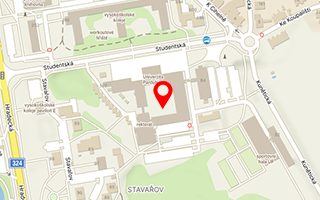
World’s First Positively Charged Boron Clusters
Chemists from the University of Pardubice and their colleagues from the Academy of Sciences have succeeded in preparing positively charged carboranes. These compounds of boron, hydrogen and carbon have never been obtained in this form before. Their formation defies the standard rules of chemistry. The compounds have unique properties that scientists will investigate. In the future, they might help treat malignant tumours or become the basis for entirely new materials.
The research was carried out by the team of Prof. Aleš Růžička from the Faculty of Chemical Technology in collaboration with their colleagues from the Institute of Inorganic Chemistry, Academy of Sciences of the Czech Republic. The research results are so unique that they were published by the prestigious journal Nature Communications that only publishes the most important scientific discoveries.
“This type of compound has been searched by chemists for decades. Many have already thought that it was wholly unobtainable. We’ve only succeeded in preparing them by coincidence, using modern stabilisation methods and unpredictable reactivity. That said, they are formed by reactions that completely contradict standard rules of chemistry and logic,” states Prof. Ing. Aleš Růžička, PhD from the Faculty of Chemical Technology, head of the excellent scientific team of the University of Pardubice.
Paradoxically for the scientists, the new substances, which have a positively charged skeleton, are formed by combining neutral clusters with electron-rich carbenes and reacting them with acid. These positively charged boron clusters have properties that predispose them to unique applications in the future.
“One of their first surprising properties is that, unlike their many predecessors, they’re stable in air and don’t burn in contact with water. Quite the opposite, they dissolve in water. These characteristics, together with their fascinating electronic properties, will lead to further research and predestine them to the treatment of civilisation diseases, malignant tumours, use in catalysis or the production of completely new materials,” says Ing. Jan Vrána, PhD from the Department of General and Inorganic Chemistry, Faculty of Chemical Technology, who participated in the research.
Currently, scientists are studying the reactivity of the new compounds whose potential benefit for use in photovoltaic cells is being explored at collaborating sites.
Pardubice, 16 September 2021
Mgr. Martina Macková
Head of Promotion and External Affairs, University of Pardubice

